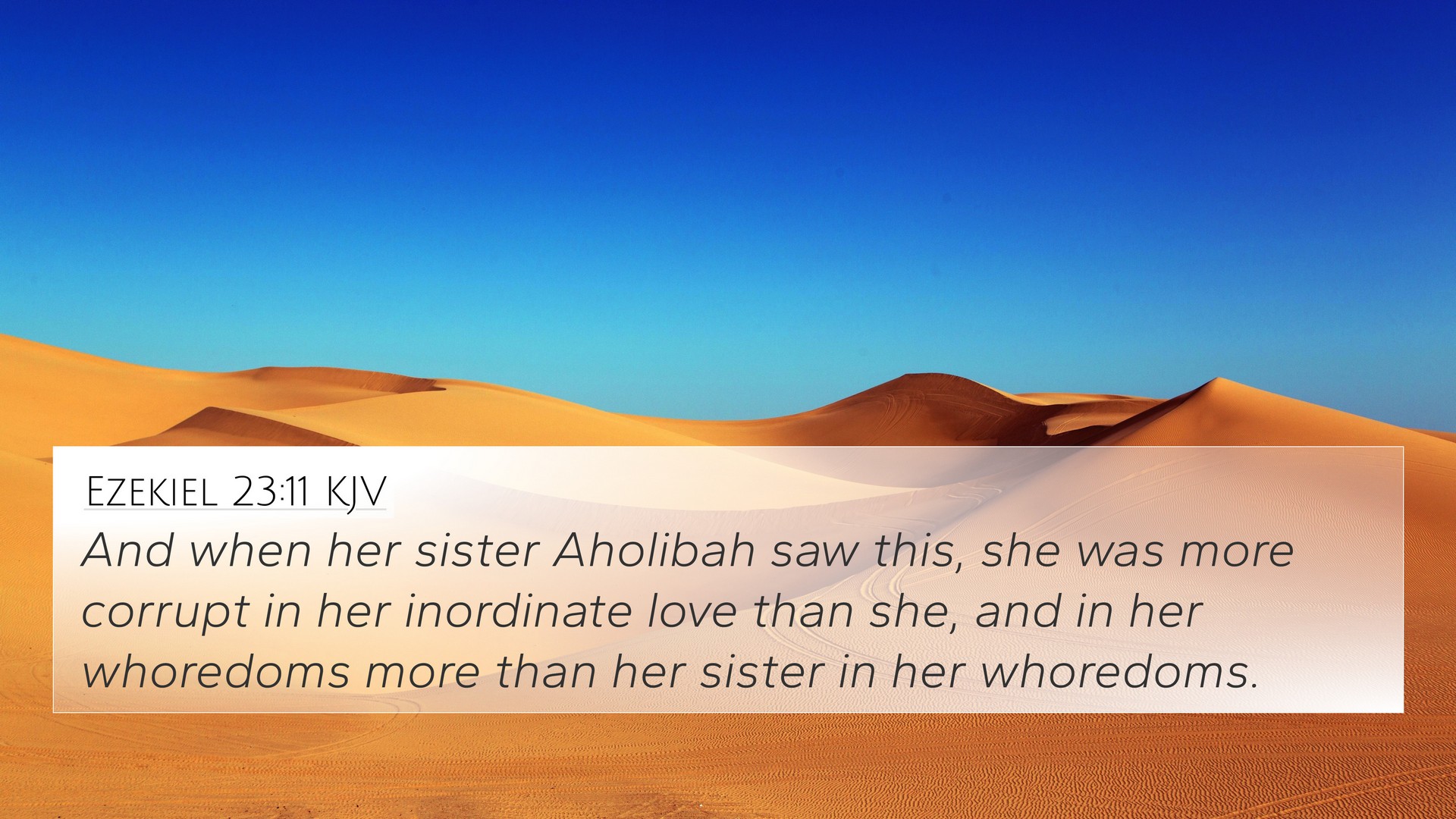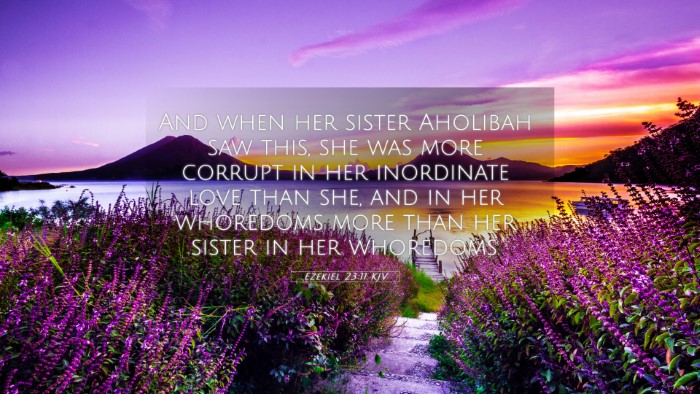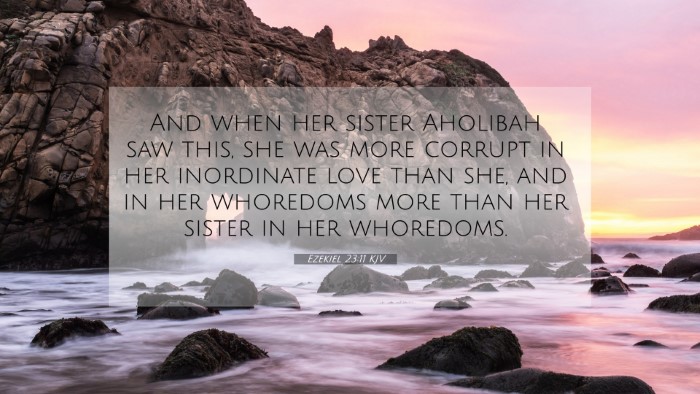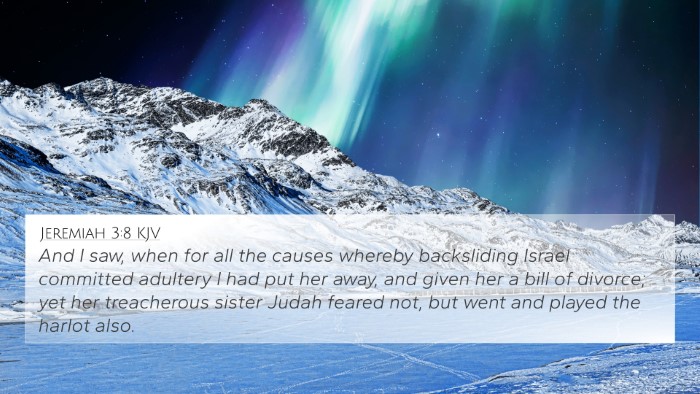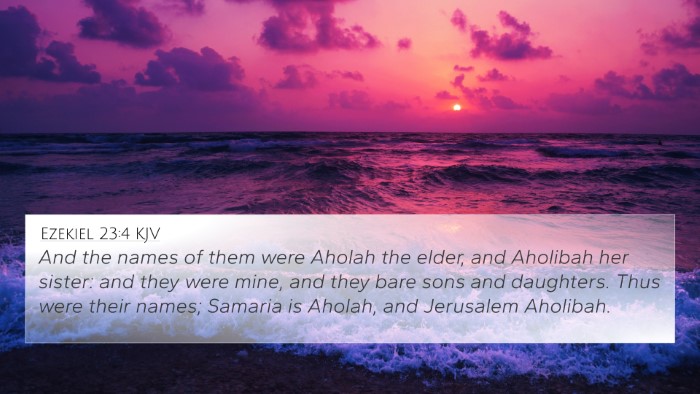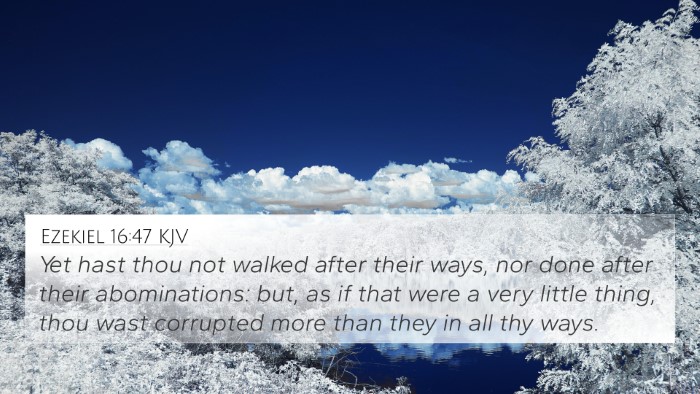Bible Verse Meaning: Ezekiel 23:11
Ezekiel 23:11 states: "And when her sister Aholibah saw this, she was more corrupt in her inordinate love than she, and in her whoredoms more than her sister in her whoredoms." This verse is part of a larger allegorical narrative in Ezekiel, where God uses the imagery of two sisters, Oholah and Oholibah, to represent the Kingdoms of Israel and Judah respectively.
Understanding the Context
The context of this verse is crucial for interpretation. It appears in a passage that describes the unfaithfulness of both kingdoms, using sexual immorality as a metaphor for idolatry and betrayal against God. The narrative emphasizes how both nations strayed from their covenantal obligations, but Aholibah (representing Judah) is depicted as even more corrupt.
Commentary Insights
-
Matthew Henry's Commentary
Matthew Henry analyzes this verse within the broader themes of unfaithfulness and God's judgment. He points out that Aholibah, or Judah, after witnessing the downfall of Israel, still indulged in worse practices, highlighting the nature of human folly and the hardened heart in the face of divine warnings.
-
Albert Barnes' Notes
Albert Barnes emphasizes the comparison between the two sisters. He notes that Aholibah's actions exemplify the principle that knowledge of another's sins does not always lead to correction but can lead to amplified transgressions instead. This illustrates a spiritual decline that can occur when one does not heed warnings.
-
Adam Clarke's Commentary
Adam Clarke reflects on the significance of the terms used in the verse. He suggests that the increasing degree of corruption serves as a warning to readers, indicating that spiritual decline often leads to more profound corruption if not repented.
Thematic Connections
This verse connects with various themes throughout the Bible, especially those dealing with idolatry, sin, and divine retribution. The following cross-references serve as important links:
- Isaiah 1:21 - Highlights the corruption of Jerusalem, paralleling Aholibah's behavior.
- Jeremiah 3:6-10 - Discusses the unfaithfulness of Israel, drawing further connections to the themes in Ezekiel.
- Hosea 4:12 - Addresses the consequences of turning to idols, which resonates with the actions of Aholibah.
- Ezekiel 16:47-52 - Provides a broader perspective on the sins of both sisters, reinforcing the message of corruption.
- Revelation 2:20 - References the church’s moral failures mirroring the Old Testament’s warnings against idolatry.
- James 4:4 - Discusses friendship with the world, akin to spiritual adultery against God.
- Matthew 24:12 - Speaks of lawlessness increasing, paralleling Aholibah's moral decline.
- 1 Thessalonians 5:21-22 - Encourages believers to test and reject all forms of evil, contrasting with Aholibah's choices.
- Philippians 3:18-19 - warns against those whose god is their belly, paralleling the indulgent nature of Aholibah.
- Romans 1:21-32 - Discusses the downward spiral into sin, directly relating to the themes presented in Ezekiel 23.
Conclusion
This verse serves as a sobering reminder of the consequences of turning away from God's commands. The narrative illustrates how both Israel and Judah strayed, with Aholibah embodying the worsening condition of a heart that rejects divine guidance. The profound insights drawn from public domain commentaries deepen our understanding of this scripture and its application within the larger biblical narrative.
Tools for Further Study
For those looking to explore Bible verse cross-references and understand connections between Bible verses more deeply, several resources can be helpful:
- Bible Concordance - A tool to locate verses and terms efficiently.
- Bible Cross-Reference Guide - Offers systematic cross-references for study.
- Cross-Reference Bible Study - Encourages comparative analysis of themes and lessons.
- Bible Reference Resources - Provides comprehensive insights into various passages.
- Bible Chain References - Links together verses based on thematic connections.
Finding Cross-References in the Bible
Understanding how to find cross-references in the Bible enhances comprehension. By examining how specific themes resonate across scriptures, we can draw richer connections and insights that speak to contemporary believers. It’s essential to engage with these tools and methods to fully realize the depth of scripture.
